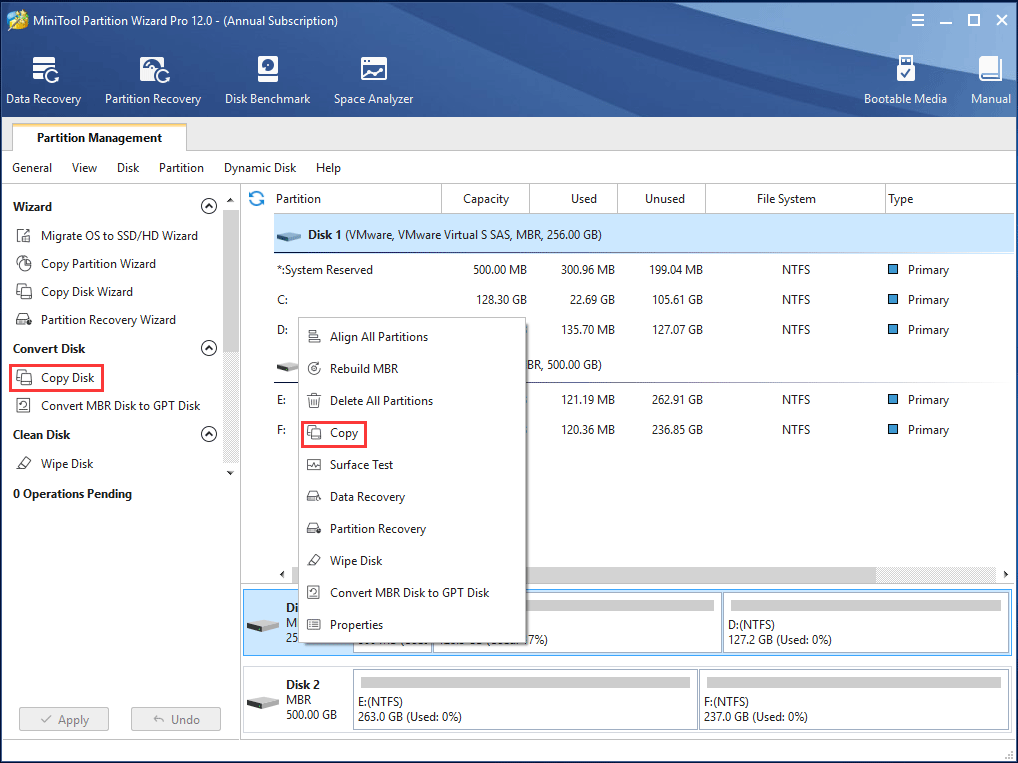

- CLONE TO A LARGER HARD DRIVE FOR A MAC COMPUTER HOW TO
- CLONE TO A LARGER HARD DRIVE FOR A MAC COMPUTER MAC OS X
- CLONE TO A LARGER HARD DRIVE FOR A MAC COMPUTER MAC OS
- CLONE TO A LARGER HARD DRIVE FOR A MAC COMPUTER FULL
Continue through the on-screen prompts until you’re asked if you'd like to import user data from another system. Once the OS has been installed, your computer will restart to the new drive and walk you through the final setup steps.

:max_bytes(150000):strip_icc()/006_how-to-upgrade-a-macbook-pro-with-an-ssd-5186494-e2fc087eeda948b9aa7138fc0483cfca.jpg)
Use Migration Assistant to transfer your data to the newly installed OS on your drive
CLONE TO A LARGER HARD DRIVE FOR A MAC COMPUTER HOW TO
If you’re installing a later OS, you can follow this guide on how to create install media.
CLONE TO A LARGER HARD DRIVE FOR A MAC COMPUTER MAC OS
If you are unable to use Internet Recovery, and you’re installing Mac OS 10.7 to 10.14, you can create a USB installer using DiskMaker X, in order to install a clean OS. If your computer boots into a four-option menu then you have the ability to use Internet Recovery. If your computer does not have an internet connection, it will prompt you to connect to a wireless network. To make sure you have access to Internet Recovery, restart your computer and immediately hold down the Command + Option + R keys until you see a spinning globe logo.
CLONE TO A LARGER HARD DRIVE FOR A MAC COMPUTER MAC OS X
If you’re using Mac OS X 10.7 or later and do not have a functional recovery partition, and your computer is found on this list (or is newer than what’s in the list), you can use the Internet Recovery feature built into your Mac. If your computer boots normally to your desktop then you do not have a recovery partition. If your computer boots into a four-option menu then you have a functional recovery partition that can install the OS. To make sure you have a functional recovery partition, restart your computer and immediately hold down the Command + R keys until the Apple logo appears. Make sure you have a means of installing your chosen OSįor Mac operating systems Mac OS X 10.6 or earlier, you will need the OEM installer disc.įor Mac OS X 10.7 and later, you can use the recovery partition on the original drive. Please contact our customer service team if you are still unsure of which solution is best. If the Mac can hold both the new drive and the original drive (for example, a 2006-2012 Mac Pro, or a laptop or Mac mini with a Data Doubler) no enclosure should be necessary. In some cases, you'll need a special enclosure for Apple's SSD. Depending on the drive’s capacity and connector type, you can use one of the following solutions to connect it to an External Enclosure, the OWC Drive Dock, or the Newer Technology Universal Drive Adapter. We offer many DIY kits with an external enclosure included. If you plan to use your old drive for external storage when the migration process is complete, you can install that drive into an enclosure. For single-drive computers, you'll need a device to connect the old drive to your computer after your new drive is installed. To transfer your data, you'll need both your original drive and your new drive, connected at the same time. Make sure you have a way to transfer your data U.2 Interchange System for Mercury Helios 3S.
CLONE TO A LARGER HARD DRIVE FOR A MAC COMPUTER FULL
Most cloning software should have the option (which is not usually the default) to do a full sector copy and you just have to enable that option. That's why you need a destination drive the exact same size or larger than the source, and it will take a long time (because what could be empty space is also copied because the copy setting doesn't care). That will copy all data space on the disk (even empty space) so it should not matter what file system is on the disk or the file system compatibility of the host system. Like Bucko said along with some other people here, the key is probably a sector by sector copy. Where sda is source and sdb is target, bs is block size (you can use larger if you want, like 1M, but don't use less if you're using SSD) of course target disk has to be same or larger size (or you'll have to deal with shrinking the source.ĭd if=/dev/sda of=/dev/sdb conv=noerror,sync bs=4096 Boot up any linux rescue CD and use DD to clone every bit on it.


 0 kommentar(er)
0 kommentar(er)
